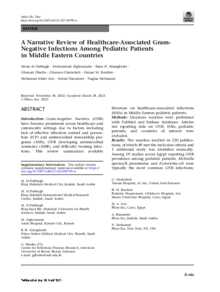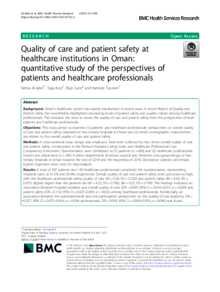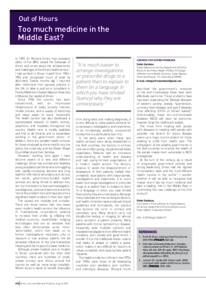وثيقة
A narrative review of healthcare-associated gram-negative infections among pediatric patients in Middle Eastern Countries.
المعرف
DOI: 10.1007/s40121-023-00799-w
المصدر
Infectious Diseases and Therapy. v. 12, 5, p. 1217-1235
المساهمون
Alghounaim, Mohammad., مؤلف
Almaghrabi, Rana H. , مؤلف
Dbaibo, Ghassan., مؤلف
Ghatasheh, Ghassan., مؤلف
Ibrahim, Hanan M., مؤلف
Aziz, Abdel Mohamed., مؤلف
Hassanien, Ashraf., مؤلف
Mohamed, Naglaa., مؤلف
الدولة
France
مكان النشر
Paris
الناشر
Adis.
ميلادي
2023-05-01
اللغة
الأنجليزية
الموضوع
الملخص الإنجليزي
Introduction: Gram-negative bacteria (GNB) have become prominent across healthcare and community settings due to factors including lack of effective infection control and prevention (ICP) and antimicrobial stewardship programs (ASPs), GNB developing antimicrobial resistance (AMR), and difficulty treating infections. This review summarizes available literature on healthcare-associated infections (HAIs) in Middle Eastern pediatric patients. Methods: Literature searches were performed with PubMed and Embase databases. Articles not reporting data on GNB, HAIs, pediatric patients, and countries of interest were excluded. Results: The searches resulted in 220 publications, of which 49 met the inclusion criteria and 1 additional study was identified manually. Among 19 studies across Egypt reporting GNB prevalence among pediatric patients, Klebsiella species/K. pneumoniae and Escherichia coli were typically the most common GNB infections; among studies reporting carbapenem resistance and multidrug resistance (MDR), rates reached 86% and 100%, respectively. Similarly, in Saudi Arabia, Klebsiella spp./K. pneumoniae and E. coli were the GNB most consistently associated with infections, and carbapenem resistance (up to 100%) and MDR (up to 75%) were frequently observed. In other Gulf Cooperation Council countries, including Kuwait, Oman, and Qatar, carbapenem resistance and MDR were also commonly reported. In Jordan and Lebanon, E. coli and Klebsiella spp./K. pneumoniae were the most common GNB isolates, and AMR rates reached 100%. Discussion: This review indicated the prevalence of GNB-causing HAIs among pediatric patients in Middle Eastern countries, with studies varying in reporting GNB and AMR. Most publications reported antimicrobial susceptibility of isolated GNB strains, with high prevalence of extended-spectrum beta-lactamase-producing K. pneumoniae and E. coli isolates. A review of ASPs highlighted the lack of data available in the region. Conclusions: Enhanced implementation of ICP, ASPs, and AMR surveillance is necessary to better understand the widespread burden of antimicrobial-resistant GNB and to better manage GNB-associated HAIs across Middle Eastern countries.
ISSN
2193-8229
قالب العنصر
مقالات الدوريات






